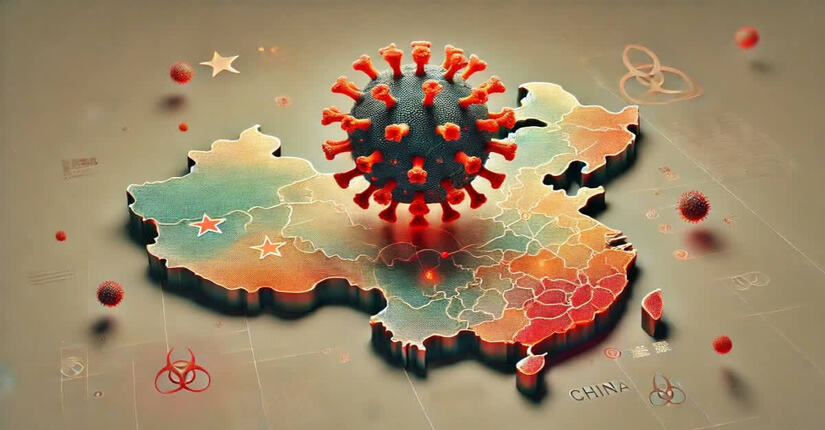The sprawling city of Los Angeles is facing one of the most destructive fire disasters in its history. As of now, at least 24 people have lost their lives, and thousands have been displaced due to the raging wildfires. Here’s a detailed account of the ongoing crisis, the challenges faced, and the broader implications for the region and beyond.
The Current Situation
Two major fires—Palisades Fire and Eaton Fire—continue to wreak havoc across Los Angeles, while a smaller blaze, the Hurst Fire, is nearly contained. These fires have collectively scorched tens of thousands of acres, destroyed homes, and disrupted countless lives.
- Palisades Fire:
This fire, the largest in the region, has burned over 23,000 acres, with containment efforts at just 11%. It threatens upscale neighborhoods like Brentwood and has forced the evacuation of the Getty Center and the nearby University of California, Los Angeles (UCLA). - Eaton Fire:
Burning over 14,000 acres in northern Los Angeles, this fire is slightly more contained at 27%. It has destroyed more than 7,000 structures, including homes and vehicles. - Hurst Fire:
Located near San Fernando, this smaller fire has burned approximately 799 acres and is almost fully contained.
Authorities have evacuated over 105,000 people, with another 87,000 under evacuation warnings. Amid these efforts, a health emergency and smoke advisory remain in effect across Los Angeles County, emphasizing the urgency of the situation.
The Role of Santa Ana Winds
The Santa Ana winds, infamous for fueling wildfires in Southern California, are a significant factor in the spread of these blazes. With gusts reaching up to 50 mph, these dry, powerful winds carry embers over vast distances, igniting new fires and making containment efforts exceedingly difficult.
A Red Flag Warning, indicating extreme fire danger, is in place until Wednesday evening. Firefighters are racing against time as these winds are expected to peak on Tuesday, further escalating the threat.
Impact on Communities
The destruction caused by these fires is staggering:
- Human Toll: At least 24 confirmed deaths and 16 reported missing. Many victims were found in the Eaton and Palisades fire zones.
- Property Damage: Over 12,000 structures destroyed, including 426 houses in the Palisades area.
- Displacement: Thousands have been forced to leave their homes, many unsure of what they will return to.
The fires have also claimed the homes of celebrities, including Mel Gibson and Paris Hilton, highlighting the indiscriminate nature of these disasters.
Economic and Environmental Costs
The fires could become the costliest in U.S. history, with projected damages of up to $150 billion. Insured losses are estimated at over $8 billion, reflecting the high value of properties in affected areas.
Beyond monetary loss, the environmental impact is profound. The fires have:
- Released significant amounts of carbon dioxide, contributing to global warming.
- Destroyed wildlife habitats.
- Degraded air quality, putting vulnerable populations at risk.
Challenges in Response
Despite the valiant efforts of firefighters, the response has faced criticism:
- Water Shortages: Some fire crews reported dry hoses due to maintenance issues at the Santa Ynez Reservoir.
- Budget Cuts: A memo revealed that reduced funding hampered emergency preparedness.
- Alert Failures: A software glitch sent erroneous evacuation alerts, causing confusion among residents.
California Governor Gavin Newsom has called for an independent investigation into these issues, emphasizing the need for accountability and improvement.
What Caused the Fires?
While the exact causes are still under investigation, experts have ruled out lightning and utility lines as culprits. The most likely factors include:
- Dried Vegetation: After a wet 2022-23, excessive vegetation dried out during the drought, creating ample fuel.
- Climate Change: Rising temperatures and prolonged dry spells have increased fire risk.
The Role of Climate Change
Climate change is a significant driver behind the growing intensity and frequency of wildfires in California. The National Oceanic and Atmospheric Administration (NOAA) links increased heat, extended droughts, and a “thirsty atmosphere” to the heightened risk.
California’s fire season, once confined to May through October, has become a year-round phenomenon. Governor Newsom aptly stated, “It’s not fire season. It’s fire year.”
How Can LA Prepare for the Future?
The current disaster highlights the need for better preparedness and infrastructure:
- Improved Water Management: Ensuring reservoirs are operational during high-risk periods is crucial.
- Enhanced Emergency Alerts: Systems must be reliable to prevent confusion and panic.
- Increased Funding: Fire departments need adequate resources to combat large-scale disasters.
- Climate Action: Reducing greenhouse gas emissions is essential to mitigate the long-term impact of climate change.
How You Can Help
If you’re looking to support those affected by the fires:
- Donate: Contribute to organizations like the Red Cross or California Community Foundation’s Wildfire Relief Fund.
- Volunteer: Offer your time to assist evacuation centers or firefighting efforts.
- Spread Awareness: Share verified information to help others stay informed and safe.
Conclusion
The Los Angeles wildfires are a grim reminder of nature’s power and the vulnerabilities of modern cities. As firefighters battle the blazes and communities begin to rebuild, it’s clear that long-term solutions are needed to address the root causes of these disasters.
With climate change exacerbating fire risks, the time for action is now. By investing in preparedness, infrastructure, and sustainability, Los Angeles can hope to protect its residents and iconic landscapes from future catastrophes.
For live updates and tips on staying safe during wildfires, follow local news outlets and government advisories.

